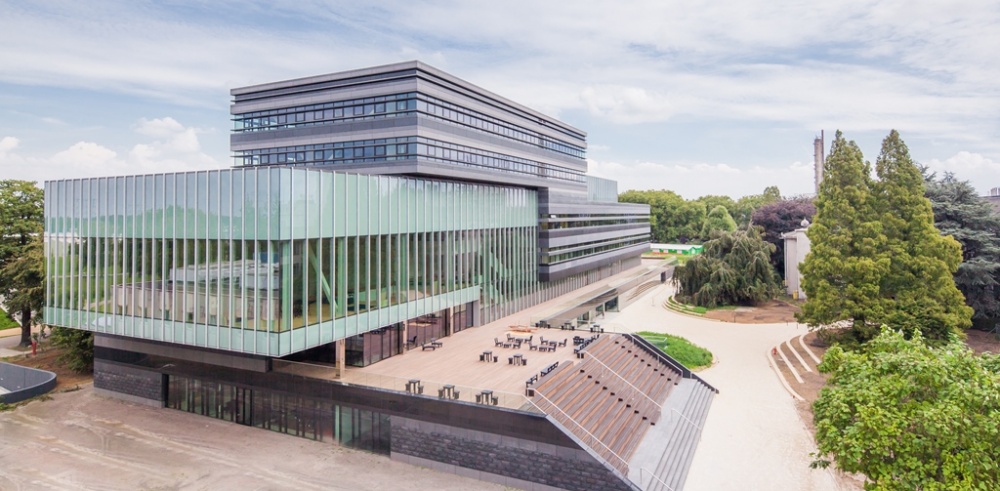14.12.2018
Life Cycle Assessment: Benefits and limitations
Sustainability is an increasingly important theme in our society. A sustainable planet is one that is livable for current and future generations. Climate change has become an urgent global sustainability problem and has boosted the exploration of more sustainable energy and materials with fundamentally reduced greenhouse gas emissions.
I have been working on sustainability from a young age. As a nine-year-old, I was active to prevent dumping of nuclear waste in the ocean and to improve waste recycling. As a Master student, I studied drought-tolerance in plants with the aim to develop robust food crops to increase global food security. As a PhD, I studied catalysts to improve the sulfur removal from diesel to prevent SO2 emissions that cause acid rain. Three years ago, I became associate professor at Maastricht University to study and improve the sustainability of chemical products and materials.
Life Cycle Assessment
Life Cycle Assessment (LCA) is widely used to support sustainable development. LCA is a modelling tool to assess environmental impacts related to a product during its entire lifespan: from raw material extraction through processing, manufacturing, distribution, use, and disposal or recycling. LCA allows decision makers to compare two products and to select the product that has the lowest impact on the environment.
As LCA considers the full life cycle and it avoids burden shifting: it prevents reducing the environmental impact in one stage while increasing the impact at other stages of the life cycle. Rather than optimizing one indicator, LCA provides a holistic view on the environmental impacts, to avoid optimizing one environmental indicator without considering the (unfavorable) effects on the other indicators. Moreover, LCA provides the possibility to identify hotspots in the environmental impact: it provides insight in how to improve processes to achieve reduced environmental effects. LCA is based on internationally accepted standards 1,2 and is widely recognized as the best approach to quantify the environmental impacts of a product on the environment during its entire life cycle.

Life Cycle Assessment: full life cycle approach
Limitations
LCA also has limitations that sometimes lead to skepticism about LCA results. LCA studies depend on assumptions and scenarios, as LCA assesses the real world in a simplified model. Studies can also have different scopes, so one study may leave out impacts or processes that another study has included. The assumptions, scenarios and scope may vary from one study to the other, leading to different LCA results. These variations in LCA approaches and results may be confusing, especially for non-experts. In addition, performing an LCA study is resource consuming, mainly due to the large amount of data needed. If data collection is poor, or if not enough data are available, the study will not lead to solid conclusions.
In addition, it is not easy to communicate the results of an LCA study. Apart from the variations in study approaches, LCA typically provides results on several environmental impacts. Product A may not always perform better than product B, but only on certain impacts. Then, a more detailed analysis is needed to explain the differences and highlight the benefits and drawbacks of both products. It can be difficult for decision makers to choose, for example, between keeping the current high level of greenhouse gas emissions or reducing the greenhouse gas emissions with adverse effects on water quality and biodiversity.
Way forward
To overcome the limitations, improved harmonization of LCA studies by more stringent generally accepted guidelines would reduce the variations in LCA studies. Evidently, all LCA studies must be fully transparent on the assumptions, models and data, to make sure that everybody can assess the validity of the study and its conclusions. Nevertheless, it can be challenging for non-LCA experts to judge the quality of an LCA study. Therefore, education and training to assist users in the application of LCA remains required3.
LCA experts may have difficulties in judging the data selection if they are not experts in all subjects of the study. Therefore, I plead for more collaboration between LCA experts and researchers from other expertise domains. Collaboration will have benefits for both fields and will lead to the best possible LCA results. In this way, progress in many research fields will also promote sustainable development. I am very pleased that this multidisciplinary collaboration is also established within FibreNet.


Left: Yvonne van der Meer, associate professor Sustainability of Biobased Materials in a Circular Economy, Maastricht University
Right: Center Court building at Brightlands Chemelot Campus in Sittard-Geleen, location of Maastricht University research and education in Biobased Materials
References
1. International Standard Organisation (ISO). Environmental management - Life cycle assessment: Principles and framework. ISO14040. (2006).
2. International Standard Organisation (ISO). Environmental management - Life cycle assessment: Requirements and Guidelines. ISO14044. (2006).
3. Maastricht Univeristy organises an online LCA course: “Life Cycle Assessment: Basic Principles and Uses”, http://www.um-lca-course.nl, developed and implemented within the framework of Chemelot InSciTe, with support of the Province of Limburg, the Netherlands
Further reading
Curran M. (2014) Strengths and Limitations of Life Cycle Assessment. In: Klöpffer W. (eds) Background and Future Prospects in Life Cycle Assessment. LCA Compendium – The Complete World of Life Cycle Assessment. Springer, Dordrecht; https://doi.org/10.1007/978-94-017-8697-3_6